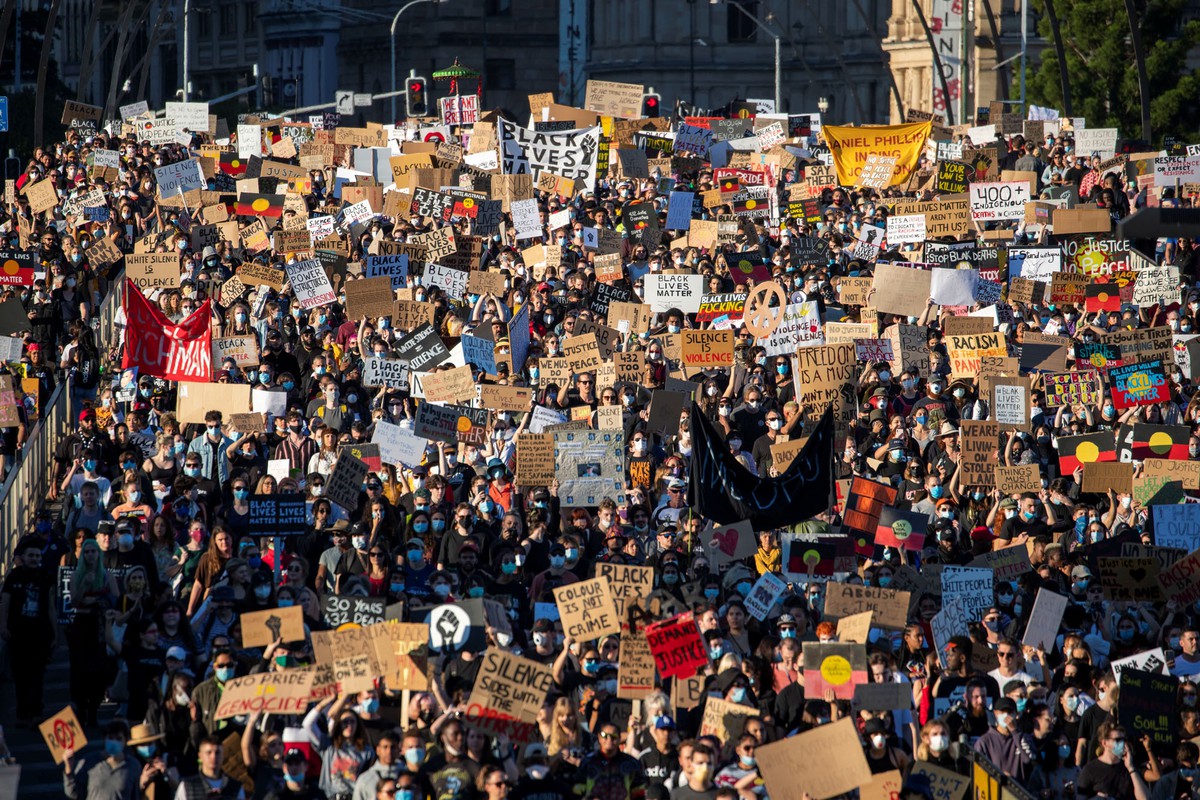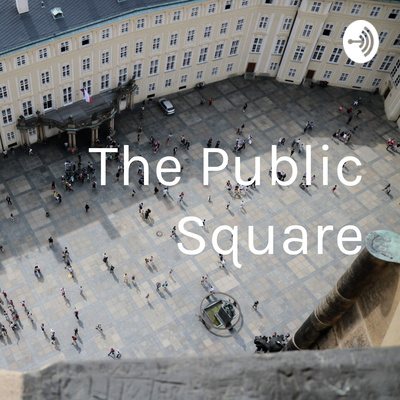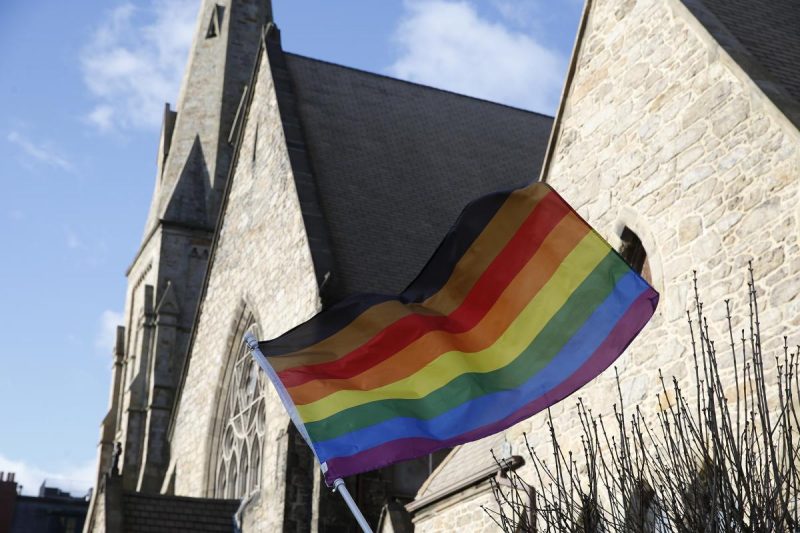Written by Taylor McGhee
Image by Glenn Reuters / AAP Images / Reuters.
The video of George Floyd’s murder was continually playing on repeat as it was broadcast on every major social media platform and news outlet for weeks on end. My social media feed shifted away from normal threads of activist work to violent perpetuations of racialized violence. Exclamations of “I can’t breathe” were seared into my memory. The burnout was sinking in, the grief was overpowering, and the fatigue was crippling. But one question seemed to be raised across social media, on TV, and among my White friends: “Has this always been happening?”
My initial response was laughing sarcastically and saying, “what do you mean by ‘has this always been happening?’” But my other response is worth pausing for a moment of reflection: What frame of the 8:46 video of George Floyd’s murder finally made you see the 400+ years of racial injustice in this country? Was Trayvon Martin not enough for you?
Let me be clear: visualizations of racialized violence are not new, nor is their documentation and dissemination. The only difference today is the advent of social media in increasing when these acts of violence are caught on camera. To subsequent sharing and retweeting of audio, videos, and livestreams has sensationalized Black death and made contemporary society immune to racialized violence and trauma.
The Civil Rights Movement embodied media consciousness via its innovative media strategy. Alexis C. Madrigal highlights how Rev. Martin Luther King Jr. recognized the necessity of bringing the civil rights struggle into American public life and onto the national stage. If the “injustices of Jim Crow” were caught on camera, then “White Americans, through their televisions, would have to see, with their own eyes, some of those horrors enacted.”[1]
In her book Black, White, and in Color: Television and Black Civil Rights, Sasha Torres explains that this televisuality denotes “a strategic understanding of the uses to which nonviolent protest and the self-iconicization of black suffering might be [used].”[2] Such media strategy was accomplished by “the further consolidation of the civil rights press corps first assembled to cover the [Emmett] Till case,”[3] which aided in the publishing of a photograph of his mutilated body lying in a casket in national newspapers.
Media consciousness is not about being trendy or tech-savvy; it is the acknowledgment of the transformative power that media has to promote and enact positive social change. In Pew Research Center’s 2018 study “Activism in the Social Media Age,” they found that more than half of Americans believe that social media is effective in raising awareness about political issues and creating sustainable social movements.[4] Student-led demonstrations and social movements have arguably become one of the most prominent forces in a modern democracy (note the success of March for Our Lives and Greta Thunberg’s climate strikes).
The Black Lives Matter movement is a prime example of the successful implementation of media consciousness. The movement was founded in the wake of the acquittal of George Zimmerman in the death of Trayvon Martin. It has been strategically designed as a decentralized social movement built upon the efforts of local chapters and grassroots organizing. The hashtag “#blacklivesmatter” has cultivated a global online community and virtual network which mobilizes communities, organizes protests and demonstrations, and provides critical resources for Black communities. Black Lives Matter utilizes “collective action to dramatize unjust increases of surveillance and other social controls in communities of color.”[5]
In Joseph V. Crockett’s essay “Religious Education in Response to Black Lives Matter: A Case for Critical Pedagogy,” he supposes that the Black Lives Matter movement’s partnership with the National Church Network demonstrates a theological commitment and “desire to reconstruct America and the world into a more just, equitable, and loving world.”[6] Crockett articulates that “the forms of ideological and hegemonic power that the BLM movement contests are the same forms of power public theology addresses when it connects teachings of Biblical Hebrew prophets to the political and social conditions of the day.”[7]
A great disservice has been done to the Black Lives Matter movement in the lack of religious leaders’ willingness to enter the digital age. With the ubiquity of social media, now more than ever religious leaders must be attuned to a new generation of community engagement centered on social media platforms. Many religious leaders are media skeptics or apprehensive of technological innovation because it is unfamiliar, or they are overwhelmed by what they don’t know. Allowing young people to create digital content or participate in digital outreach can be considered an extension of youth ministry. Yet, the digital revolution is here to stay, and religious leadership must evolve with the tides of society.
It is time that religious leadership join forces and link arms with young trailblazers and activists. Religious leadership has a unique opportunity to enter these virtual communities and facilitate meaningful discourse which bridges the ever-growing gap between public and spiritual life. Media conscious religious leadership has the potential to cultivate digital space for healing, prayer, and reflection, and to become powerful change agents in combatting racialized violence. It sparks the beginning of collective healing, reclamation, and reconciliation. Doing so interrupts the cycles of racialization violence and intergenerational trauma while simultaneously engaging in media practices beneficial to social organizing as it once were during the Civil Rights Movement.
[1] Alexis C. Madrigal, “When the Revolution Was Televised,” The Atlantic, April 1, 2018, https://www.theatlantic.com/technology/archive/2018/04/televisions-civil-rights-revolution/554639/.
[2] Sasha Torres, Black, White, and in Color: Television and Black Civil Rights (Oxford: Princeton University Press, 2003), 28, doi:10.2307/j.ctv36zqw3.
[3] Ibid.
[4] Pew Research Center, July 2018, “Activism in the Social Media Age,” https://www.pewresearch.org/internet/2018/07/11/activism-in-the-social-media-age/.
[5] Joseph V. Crockett, “Religious Education in Response to Black Lives Matter: A Case for Critical Pedagogy, in From Lament to Advocacy: Black Religious Education and Public Ministry, ed. Anne E. Streaty Wimberley, Nathaniel D. West, Annie Lockhart-Gilroy (Nashville: GBHEM Publishing), 99.
[6] Crockett, 109-110.
[7] Crockett, 104.





1 Comment
Add Yours →I wonder if religious leaders’ embrace of social media in the face of the pandemic will “stick” once we are able to more safely gather in person? That’s a strategic question I have. The other is a question about sharing leadership with young adults. In her essay, Mary Young refers to Leah Gunning Francis’ book, Ferguson and Faith. One of the patterns she describes in that book is that some religious leaders were following the lead of young adult BLM leaders – just showing up, and offering their presence and their help, rather than claiming the public “pulpit.” I wonder if more religious leaders could also follow the lead of young adults in the digital aspects of social movements and social change? Not just seeing social media as a “tool” to reach young adults, but as a ministry in which young adults are already equipped to lead?